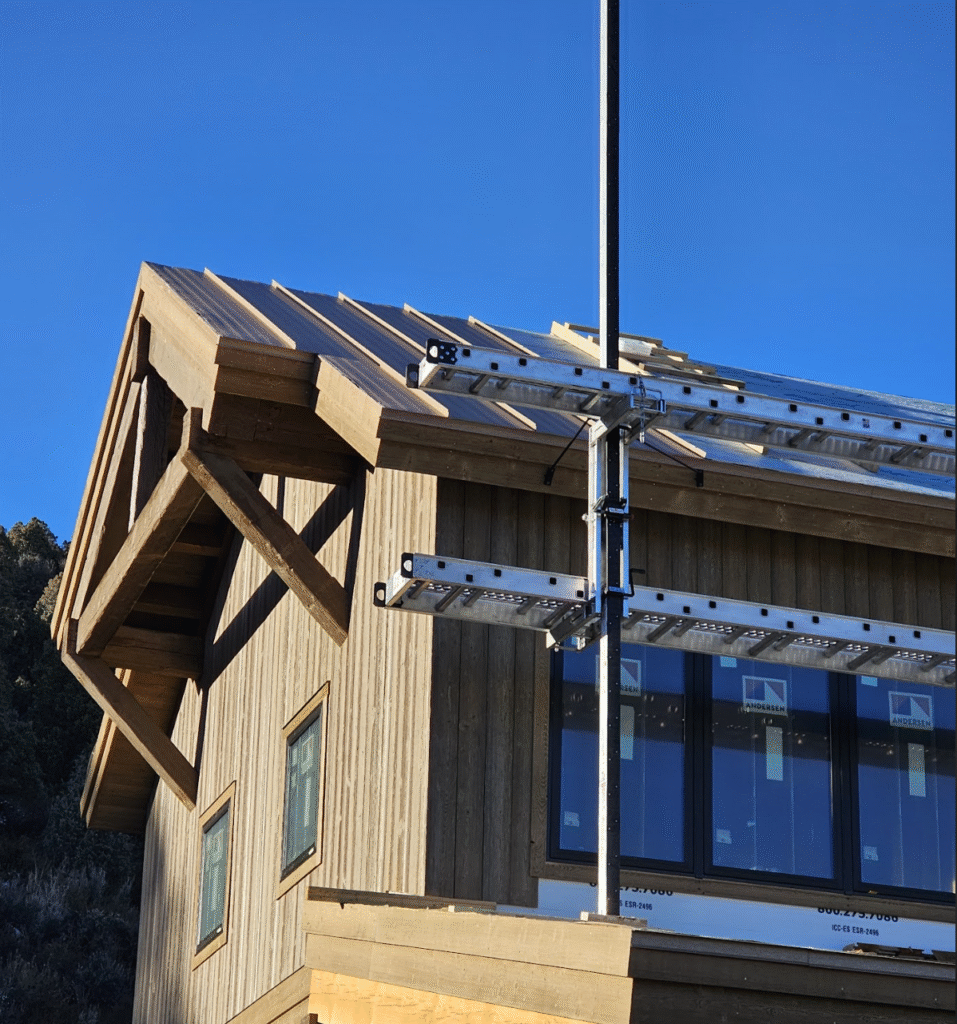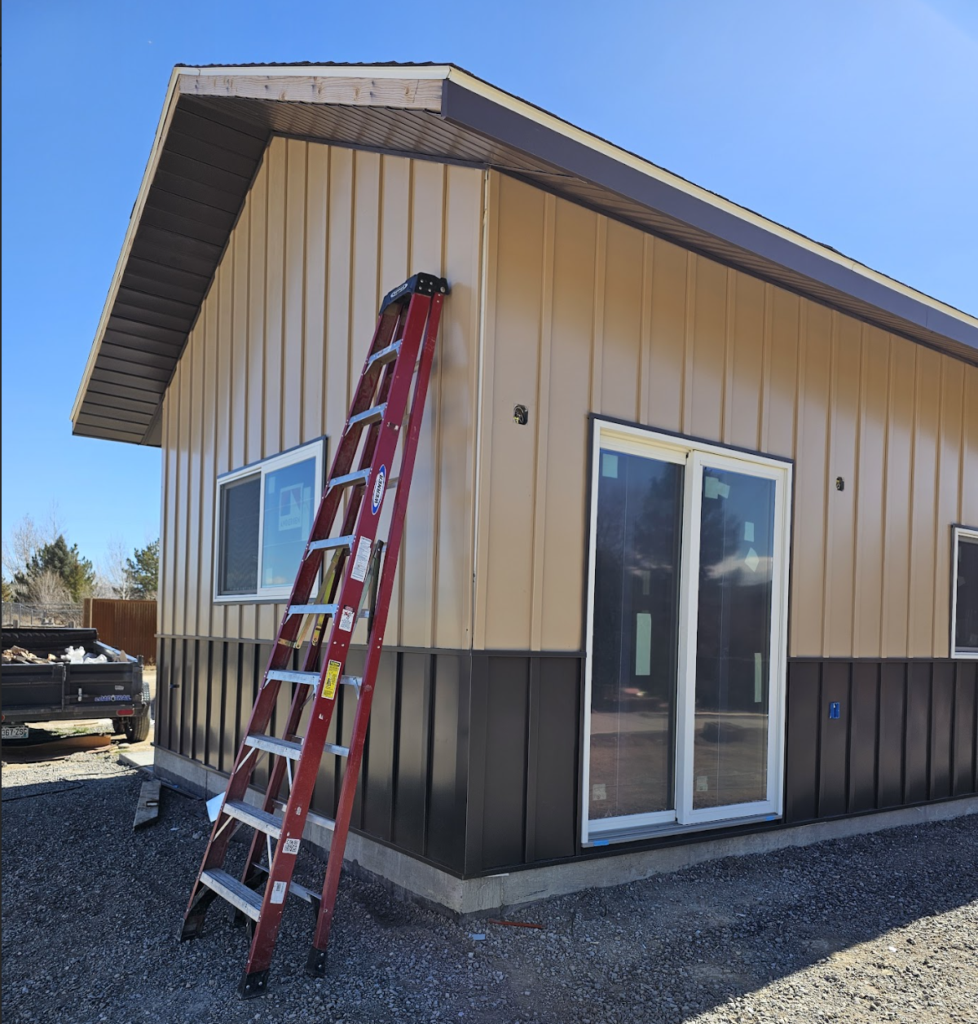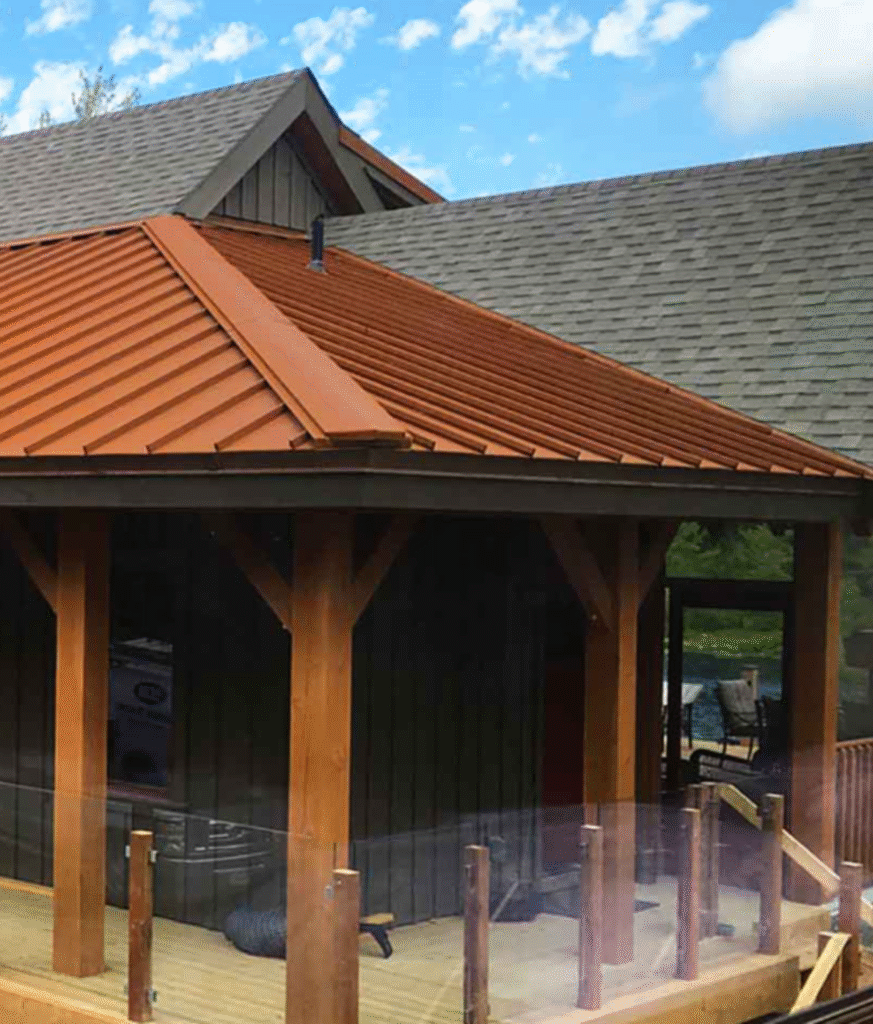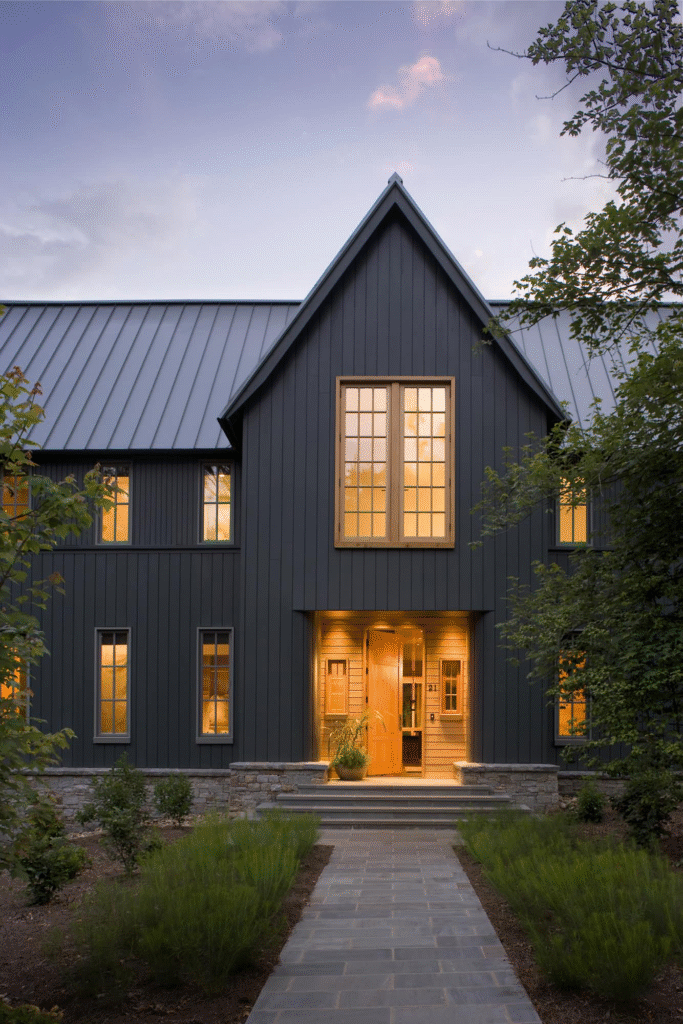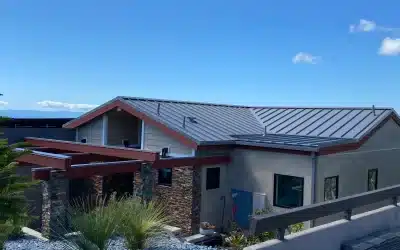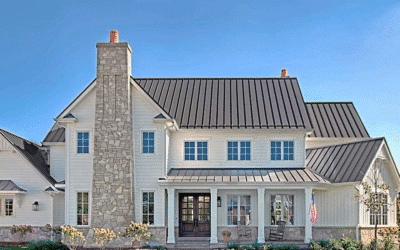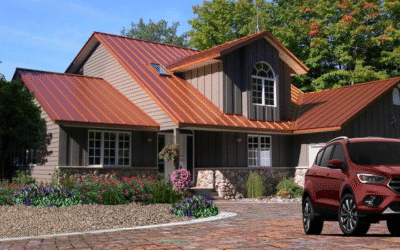Premium metal roofing stands apart from standard options in protecting your home. Our team at Western Slope Metals has watched the right metal roof reshape both the look and function of properties. Standing seam and corrugated panels lead the metal panel roofing market today. These options differ by a lot in their design, performance, and cost.
Table Of Contents
- Visual and Structural Differences
- Installation and Maintenance
- Cost and Best Use Cases
- Comparison Table
- Conclusion
- FAQs
Both choices give you the durability and longevity that make metal roofing attractive, but each fits different needs and budgets. Standing seam roofing provides a sleek, modern look with hidden fasteners. Corrugated metal roofing shows off that classic, wavy appearance at a more affordable price point. Your investment in a new roof for your home or business needs careful consideration of these differences. Sheet metal roofing varies in looks, installation needs, maintenance requirements, and overall value.
Our years of experience as roofing specialists installing metal roofing of all types and prices help us direct you through these key differences. We’ll ensure you make the best choice for your needs.
Visual and Structural Differences
These two popular metal roofing types show their biggest difference in profile shape. You can easily spot it from the ground. Standing seam metal roofing shows clean, straight lines with raised seams running from roof edge to peak. The lifted seams create a sleek, contemporary look that fits modern architectural designs. Corrugated metal roofing takes a different approach with its wavy or ribbed pattern that adds industrial or rustic charm.
The fastening systems set these two metal panel roofing types apart structurally. Standing seam panels use hidden fasteners where panels interlock with each other. This clever design hides all screws and creates a smooth surface. It doesn’t just look better – it also cuts down on spots where water might leak through.
Corrugated panels work differently. They use exposed fasteners that go straight through the metal into the roof deck. This method leaves visible screw heads across the surface.
Standing seam panels come wider (12-24 inches) with subtle, clean lines that suit contemporary or high-end homes. Corrugated panels feature narrower widths and bold ridges that cast distinctive shadows. They work great for both residential metal roofing and farm buildings.
Both systems offer plenty of color choices. Standing seam often comes with premium finishes since it’s a higher-end product. The metal thickness varies too – standing seam usually uses heavier gauges to boost durability.
Installation and Maintenance
Installation methods play a crucial role in choosing the right metal roofing type for your project. Property owners often make their final decision based on these installation differences.
These two systems have a fundamental difference in how they’re installed. Standing seam panels use sophisticated interlocking mechanisms that require specialized techniques and professional installation. Each panel needs precise positioning before mechanical seaming creates watertight, raised connections.
While labor costs are higher upfront, this system delivers exceptional weather resistance and needs minimal maintenance as time goes by.
Corrugated panels come with a simpler installation process. These panels attach directly to the roof deck with exposed fasteners – screws that go through the metal. This makes the initial installation quicker and less expensive, but there’s more to think about long-term. Each exposed screw could let moisture in if you don’t maintain it properly.
These metal panel roofing types have high differences in maintenance needs. Standing seam roofs:
- Need minimal maintenance with occasional inspections
- Don’t require fastener tightening
- Resist water infiltration better
- Have fewer failure points
Corrugated panels need:
- Regular exposed fastener inspections
- Periodic screw tightening or replacement
- Rubber washer deterioration checks
- More careful leak monitoring, especially around fasteners
Both systems protect your property for decades when installed correctly. Standing seam’s concealed fastener design gives it natural advantages for longevity and needs less maintenance work. Our custom metal roofing specialists can help you weigh these practical factors to find a system that matches your maintenance priorities and long-term goals.
Professional installation matters greatly. The way your metal roof gets installed affects how well it performs and how long it lasts, whatever type you choose.
Cost and Best Use Cases
Price gaps between popular metal roofing types often become the deciding factor for property owners who weigh their options.
Standing seam metal roofing costs 20-30% more than corrugated panels. Materials, manufacturing complexity, and installation requirements drive this price difference. Premium materials and specialized installation techniques are needed for standing seam systems, which increases both material and labor costs.
A typical residential project starts around $8-12 per square foot installed, based on roof complexity and material gage.
Corrugated metal roofing gives you a budget-friendly option that doesn’t sacrifice durability. These panels cost $4-8 per square foot installed. Large structures benefit from this option as costs can multiply quickly. Simple installation and straightforward manufacturing lead to these cost savings.
Each system excels in specific applications beyond their original price tags. Standing seam works best in:
- Modern residential homes where esthetic appeal justifies the premium
- Coastal properties requiring superior weather resistance
- Projects prioritizing longevity over initial cost savings
Corrugated panels are ideal for:
- Agricultural buildings and storage facilities
- Budget-conscious residential projects
- Structures with rustic or industrial design esthetics
The evaluation of metal roofing types and prices should look at long-term value and upfront costs. Standing seam’s concealed fastener system needs less maintenance and lasts 5-10 years longer than corrugated panels. Many homeowners find this extended lifespan offsets the higher upfront investment.
Standing seam remains popular for high-visibility commercial locations while corrugated panels suit utilitarian structures better. Standing seam goes on prominent roof sections visible from the street, and corrugated panels cover less visible areas or outbuildings. This approach creates the perfect balance between budget and appearance.
Comparison Table
| Feature | Standing Seam | Corrugated Metal |
| Visual Appearance | Clean lines with elevated seams | Wave-like or ribbed pattern |
| Panel Width | 12-24 inches | Smaller widths |
| Fastener System | Hidden fasteners | Visible fasteners |
| Installation Complexity | Advanced techniques required | Simple installation process |
| Professional Installation | Mandatory | Recommended but not required |
| Maintenance Level | Low upkeep | Regular care needed |
| Maintenance Tasks | – Periodic checks | – Fastener inspection regularly
– Screw tightening as needed – Washer condition monitoring |
| Cost (per sq ft installed) | $8-12 | $4-8 |
| Relative Cost | Higher by 20-30% | Cost-effective option |
| Best Applications | – Modern homes
– Coastal properties – Premium residential – Prime commercial locations |
– Farm buildings
– Storage units – Value-focused projects – Industrial applications |
| Lifespan Advantage | Outlasts corrugated by 5-10 years | Standard duration |
| Weather Resistance | Exceptional | Reliable |
Conclusion
The best metal roof for you depends on your budget, priorities, and style. Standing seam offers a sleek look, hidden fasteners, and top weather protection—but at a higher cost. Corrugated panels are more affordable and durable, though they require more maintenance due to exposed fasteners. They’re a great fit for barns, outbuildings, and rustic designs.
No matter which you choose, proper installation is key. Even the best materials fail without skilled workmanship. Local weather also matters—standing seam is ideal for harsh climates, while corrugated works well in milder areas.
Before deciding, have our specialists assess your property. We’ll help match your needs to the right system. Both options offer durability, longevity, and solid value when installed correctly.
FAQs
What are the main visual differences between standing seam and corrugated metal roofing?
Standing seam roofing features clean, straight lines with raised seams running vertically, creating a modern look. Corrugated metal roofing has a distinctive wavy or ribbed pattern, giving it a more industrial or rustic appearance.
How do the installation processes differ for these two roofing types?
Standing seam panels require specialized techniques and professional installation due to their sophisticated interlocking mechanism. Corrugated panels have a more straightforward installation process using exposed fasteners, making it faster and less expensive initially.
What are the maintenance requirements for standing seam and corrugated metal roofs?
Standing seam roofs require minimal maintenance with occasional inspections. Corrugated roofs need regular inspection of exposed fasteners, periodic tightening or replacement of screws, and more vigilant leak monitoring, particularly at fastener points.
How do the costs compare between standing seam and corrugated metal roofing?
Standing seam metal roofing typically costs 20-30% more than corrugated panels, with prices starting around $8-12 per square foot installed. Corrugated metal roofing is more budget-friendly, generally running $4-8 per square foot installed.
Which roofing type is best for different applications?
Standing seam excels in modern residential homes, coastal properties, and projects prioritizing longevity. Corrugated panels are ideal for agricultural buildings, storage facilities, budget-conscious residential projects, and structures with rustic or industrial design esthetics.
How Western Slope Metals Helps You Choose Between Standing Seam and Corrugated Roofing
→ Understand the pros and cons of each roofing type for your property
→ Get expert insight based on local weather, style, and long-term performance
→ Choose a roof that fits your budget and stands the test of time
⭐⭐⭐⭐⭐ Trusted by Homeowners Across the Region


